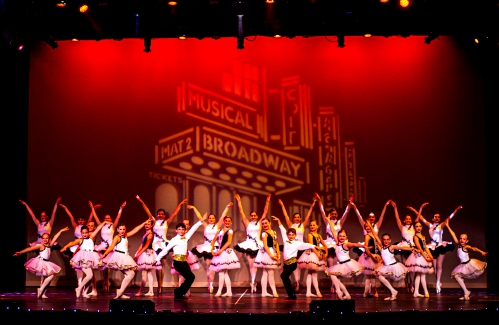
‘He died loving you’ — Jesse Sullivan sentenced in murder of half-brother Zackary
While his older brother, Jesse, was in prison, Zackary Sullivan used to send him his allowance. Even as a kid, he wanted to share everything he had with the people he loved.

You have to flip a lot of pages on the calendar to find the last time it didn’t rain on a Saturday
Something weird is going to happen Saturday: It won’t rain.
Most Read
 A Webster property was sold for unpaid taxes in 2021. Now, the former owner wants his money back
A Webster property was sold for unpaid taxes in 2021. Now, the former owner wants his money back
 Photos: Concord High students strut their stuff at prom
Photos: Concord High students strut their stuff at prom
 Photos and video: Concord ‘No Kings’ protests bring new voices
Photos and video: Concord ‘No Kings’ protests bring new voices
 Concord city councilors reconsider their nomination process after appointment backlash
Concord city councilors reconsider their nomination process after appointment backlash
 ‘Unlimited’ — Concord Seniors turn their tassels
‘Unlimited’ — Concord Seniors turn their tassels
 Both remaining Rite Aid stores in Concord slated for closure
Both remaining Rite Aid stores in Concord slated for closure
Editors Picks
 A Webster property was sold for unpaid taxes in 2021. Now, the former owner wants his money back
A Webster property was sold for unpaid taxes in 2021. Now, the former owner wants his money back
 Inside EFAs: How school vouchers have fueled a Christian school enrollment boom in New Hampshire
Inside EFAs: How school vouchers have fueled a Christian school enrollment boom in New Hampshire
 City prepares to clear, clean longstanding encampments in Healy Park
City prepares to clear, clean longstanding encampments in Healy Park
 Productive or poisonous? Yearslong clubhouse fight ends with council approval
Productive or poisonous? Yearslong clubhouse fight ends with council approval
Sports

Athlete of the Week: Nate Kiah, Bow Falcons
Bow High School senior pitcher Nate Kiah had a stellar season on the mound and was a part of many deep playoff runs during his varsity career.
Opinion

Opinion: Outlines of a new dystopia
 Opinion: Speechless in America no more
Opinion: Speechless in America no more
 Opinion: Friends don’t let friends drive drunk
Opinion: Friends don’t let friends drive drunk
 Opinion: Concord should be run like a household, not a business
Opinion: Concord should be run like a household, not a business

Your Daily Puzzles

An approachable redesign to a classic. Explore our "hints."

A quick daily flip. Finally, someone cracked the code on digital jigsaw puzzles.

Chess but with chaos: Every day is a unique, wacky board.

Word search but as a strategy game. Clearing the board feels really good.

Align the letters in just the right way to spell a word. And then more words.
Politics

New Hampshire school phone ban could be among strictest in the country
When Gov. Kelly Ayotte called on the state legislature to pass a school phone ban in January, the pivotal question wasn’t whether the widely popular policy would pass but how far it would go.
 Sununu decides he won’t run for Senate despite praise from Trump
Sununu decides he won’t run for Senate despite praise from Trump
Arts & Life

Concord Hospital Health System welcomes New England College nursing cohort
Last month, Concord Hospital Health System welcomed this year’s cohort of 18 nursing students from the New England College class of 2027.
 High Range coming to Henniker Concert Series
High Range coming to Henniker Concert Series
 Artist spotlight: Jackie Hanson
Artist spotlight: Jackie Hanson
Obituaries
 Russell C. Rivard
Russell C. Rivard
Hill, NH - With profound sadness we announce the passing away of Russell C. Rivard , 71 on May 7, 2025 with his wife Derelyn by his side. He was a resident of Hill, NH for over 30 years and Quincy, MA. Russell was born, raised, and... remainder of obit for Russell C. Rivard
 Larry C. Owsowitz
Larry C. Owsowitz
Concord, NH - Larry C. Owsowitz died at hospice house in Concord on Tuesday, June 10 after a long battle with glioblastoma. Larry was born in Moses Lake, Washington on February 14, 1957. As an Air Force brat, Larry grew up moving from b... remainder of obit for Larry C. Owsowitz
 Malcolm A.R. Stewart Jr.
Malcolm A.R. Stewart Jr.
Malcolm A.R. Stewart, Jr. Concord, NH - Malcolm A.R. Stewart, Jr., 86, of Concord, NH died on Tuesday, June 10, 2025, at Concord Hospital, in Concord, NH. Malcolm was born on July 15, 1938, in Laconia, NH, the son of the late Malcolm A.... remainder of obit for Malcolm A.R. Stewart Jr.
 Robert J. Cassavaugh
Robert J. Cassavaugh
Robert J. "Bob" Cassavaugh Penacook, NH - Robert J. "Bob" Cassavaugh, 96, of Penacook, passed away on June 6, 2025, at the Merrimack County Nursing Home, surrounded by family. He was born in Concord, NH on April 6, 1929, as the only chil... remainder of obit for Robert J. Cassavaugh


 Officer testifies in murder trial that she never saw colleague place knee on psychiatric patient
Officer testifies in murder trial that she never saw colleague place knee on psychiatric patient
 Richard Ellison appeals second-degree murder conviction for fatal Concord fire
Richard Ellison appeals second-degree murder conviction for fatal Concord fire
 Karen Read found not guilty of second-degree murder
Karen Read found not guilty of second-degree murder
 Scammer who stole from Pittsfield convenience store to be arraigned in Concord
Scammer who stole from Pittsfield convenience store to be arraigned in Concord
 Three arrested after Medicaid ‘die-in,’ refusing to leave Legislative Office Building
Three arrested after Medicaid ‘die-in,’ refusing to leave Legislative Office Building
 2025 Brodsky Prize for Excellence in Student Journalism awarded to Londonderry junior
2025 Brodsky Prize for Excellence in Student Journalism awarded to Londonderry junior
 Former prison guard Matthew Millar of Boscawen stands trial in death of patient at Secure Psychiatric Unit
Former prison guard Matthew Millar of Boscawen stands trial in death of patient at Secure Psychiatric Unit
 Attorney General: New Hampshire could receive up to $30 million for opioid treatment and prevention from Purdue settlement
Attorney General: New Hampshire could receive up to $30 million for opioid treatment and prevention from Purdue settlement

 Track & field: Hopkinton’s Lane wins New England title in 3,200 meters, Concord’s Saysaw runs state record times in 100 and 200
Track & field: Hopkinton’s Lane wins New England title in 3,200 meters, Concord’s Saysaw runs state record times in 100 and 200 Boys’ Lacrosse: Bears narrowly lose to Plymouth in D-III championship, 7-5
Boys’ Lacrosse: Bears narrowly lose to Plymouth in D-III championship, 7-5 Boys’ volleyball: Coe-Brown wins program’s first championship, completes perfect season
Boys’ volleyball: Coe-Brown wins program’s first championship, completes perfect season Baseball: John Stark falls in D-II championship to top-ranked Souhegan
Baseball: John Stark falls in D-II championship to top-ranked Souhegan Opinion: Our leaders’ puzzling decision to eliminate the State Council on the Arts
Opinion: Our leaders’ puzzling decision to eliminate the State Council on the Arts Concord became a Housing Champion. Now, state lawmakers could eliminate the funding.
Concord became a Housing Champion. Now, state lawmakers could eliminate the funding. ‘A wild accusation’: House votes to nix Child Advocate after Rep. suggests legislative interference
‘A wild accusation’: House votes to nix Child Advocate after Rep. suggests legislative interference  Town elections offer preview of citizenship voting rules being considered nationwide
Town elections offer preview of citizenship voting rules being considered nationwide Young Professional of the Month Cady Hickman: Harmonizing Marketing, Marathons and Meaningful Moments
Young Professional of the Month Cady Hickman: Harmonizing Marketing, Marathons and Meaningful Moments White Mountain art exhibition makes new home at New Hampshire Historical Society
White Mountain art exhibition makes new home at New Hampshire Historical Society 
